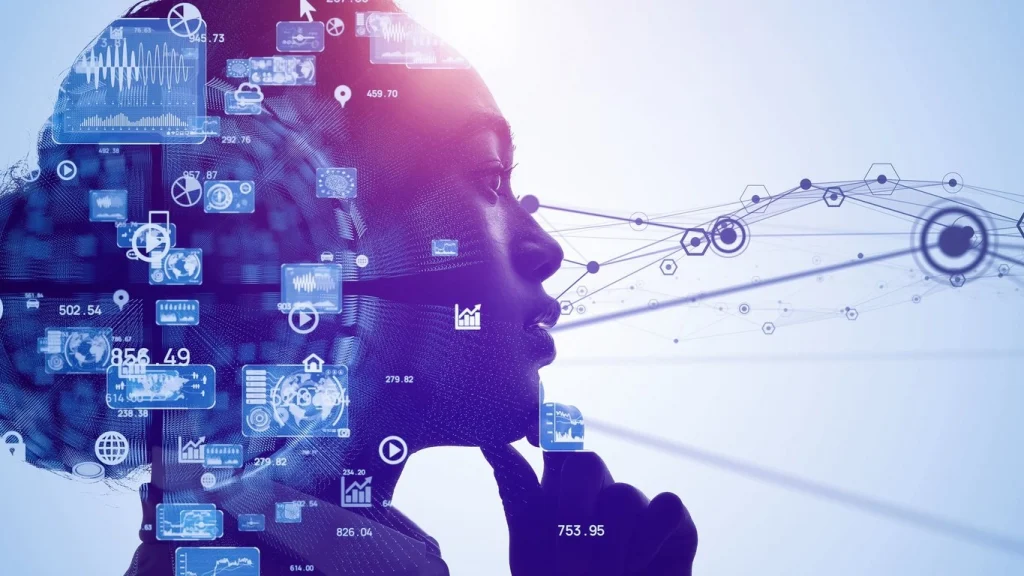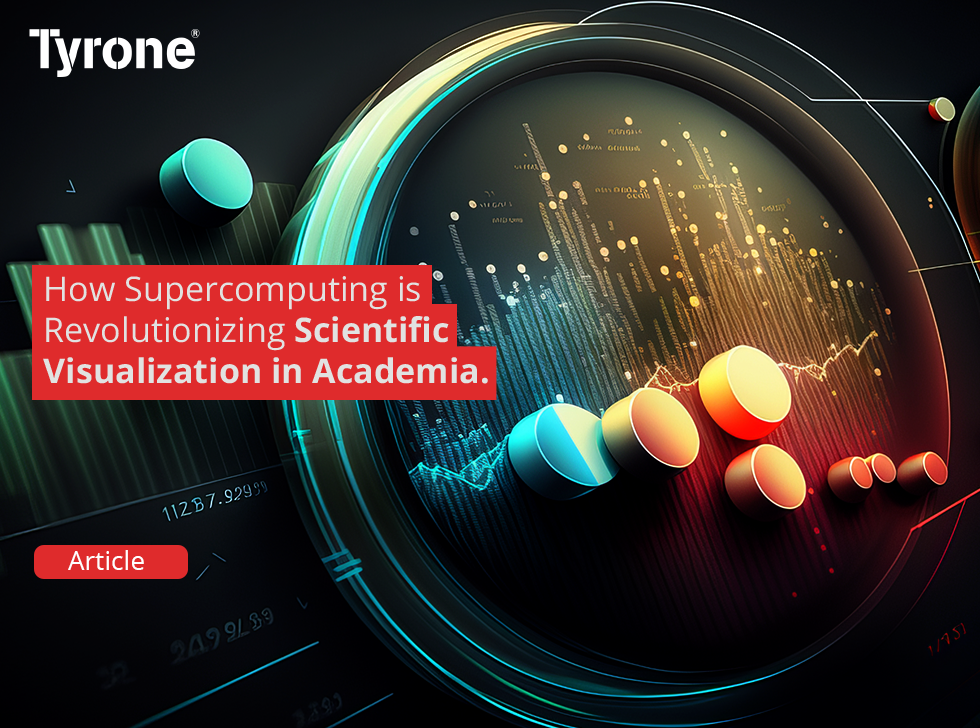Scientific visualization transforms complex data into graphical representations that can reveal patterns, trends, and insights. It is a powerful tool for scientific discovery and communication, as it enables researchers to “observe” their simulations and experiments, and to share their findings with others. However, scientific visualization also poses significant challenges, especially when dealing with large-scale, high-dimensional, and heterogeneous data sets that are generated by supercomputing applications.
Supercomputing is the use of advanced computing systems that can perform calculations at speeds and scales beyond the capabilities of conventional computers. Supercomputing enables researchers to address questions and find solutions that could not previously be obtained, offering unparalleled computational capabilities. Supercomputing applications span a wide range of scientific domains, such as physics, chemistry, biology, engineering, climate, and health.
In this article, we will explore how supercomputing is revolutionizing scientific visualization in academia, by highlighting some of the recent advances, challenges, and opportunities in this field. We will also discuss how scientific visualization can benefit stakeholders, such as funding agencies, policy makers, and the general public, by providing them with clear and compelling visual evidence of the scientific outcomes and impacts of supercomputing research.

Advances in Supercomputing and Scientific Visualization
Supercomputing and scientific visualization are closely intertwined, as they both rely on and enable each other. On one hand, supercomputing provides the data and the computational power that are needed for scientific visualization. On the other hand, scientific visualization provides the feedback and the guidance that are needed for supercomputing. Together, they form a synergistic cycle that enhances the scientific process and the scientific knowledge.
In recent years, there have been significant advances in both supercomputing and scientific visualization, driven by the development of new hardware, software, and algorithms. Some of the notable examples are:
- The emergence of exascale computing, which refers to computing systems that can perform at least one exaflop, or one quintillion (1018) floating-point operations per second. Exascale computing is expected to enable unprecedented levels of scientific discovery and innovation, by allowing researchers to simulate and analyze phenomena that are otherwise too complex, too large, or too fast to be studied. For instance, exascale computing could help researchers to model the behavior of the human brain, the evolution of the universe, or the impact of climate change. However, exascale computing also poses new challenges for scientific visualization, such as how to handle the massive amounts of data that are generated, how to extract meaningful information from the data, and how to present the data in an understandable and interactive way.
- The advancement of artificial intelligence (AI), which refers to the ability of machines to perform tasks that normally require human intelligence, such as learning, reasoning, and decision making. AI has been increasingly applied to supercomputing and scientific visualization, as it can help researchers to automate, optimize, and enhance various aspects of the scientific workflow. For example, AI can help researchers to design and execute supercomputing experiments, to analyze and interpret supercomputing data, and to generate and refine scientific visualizations. AI can also help researchers to discover new patterns, relationships, and insights from the data, and to generate new hypotheses and predictions. However, AI also raises new questions for scientific visualization, such as how to ensure the reliability, validity, and transparency of the AI methods, how to integrate the human and the machine intelligence, and how to communicate the AI results and the uncertainties to the stakeholders.
- The improvement of virtual reality (VR) and augmented reality (AR), which refer to the technologies that create immersive and interactive environments that simulate or augment the real world. VR and AR have been increasingly used for scientific visualization, as they can provide researchers and stakeholders with novel and engaging ways to explore and understand supercomputing data. For example, VR and AR can help researchers and stakeholders to visualize and manipulate supercomputing data in three-dimensional space, to collaborate and communicate with each other in virtual or augmented environments, and to experience and empathize with the phenomena that are simulated or measured by supercomputing. However, VR and AR also pose new challenges for scientific visualization, such as how to ensure the quality, accuracy, and consistency of the VR and AR representations, how to balance the trade-off between realism and abstraction, and how to evaluate the effectiveness and the impact of the VR and AR experiences.
Challenges and Opportunities in Supercomputing and Scientific Visualization
Despite the remarkable advances in supercomputing and scientific visualization, there are still many challenges and opportunities that remain to be addressed and explored. Some of the key issues are:
- The scalability of supercomputing and scientific visualization, which refers to the ability to handle and process large and complex data sets that are generated by supercomputing applications. Scalability is a critical issue, as the data volume, variety, and velocity are expected to increase exponentially with the advent of exascale computing and the proliferation of data sources. Scalability requires the development of new methods and tools that can efficiently and effectively manage, store, transfer, analyze, and visualize supercomputing data, while preserving the data quality, integrity, and security. Scalability also requires the adoption of new paradigms and architectures that can leverage the distributed and parallel capabilities of supercomputing systems, such as cloud computing, edge computing, and in situ computing.
- The usability of supercomputing and scientific visualization, which refers to the ease of use and the user satisfaction of the methods and tools that are used for supercomputing and scientific visualization. Usability is a crucial issue, as the users of supercomputing and scientific visualization are diverse and heterogeneous, ranging from domain experts to novice users, and from researchers to stakeholders. Usability requires the design and evaluation of user-friendly and user-centric interfaces and interactions that can accommodate the different needs, preferences, and backgrounds of the users, and that can support the different tasks, goals, and contexts of the users. Usability also requires the incorporation of user feedback and user involvement in the development and improvement of supercomputing and scientific visualization methods and tools, such as through user studies, user testing, and user co-design.
- The impact of supercomputing and scientific visualization, which refers to the outcomes and the benefits that are derived from supercomputing and scientific visualization. Impact is a vital issue, as the ultimate goal of supercomputing and scientific visualization is to advance the scientific knowledge and to address the societal challenges. Impact requires the assessment and measurement of the scientific and societal impacts of supercomputing and scientific visualization, such as through indicators, metrics, and case studies. Impact also requires the dissemination and communication of the supercomputing and scientific visualization results and impacts to the relevant stakeholders, such as through publications, presentations, and outreach activities.
Benefits for Stakeholders
Supercomputing and scientific visualization can provide significant benefits for various stakeholders, such as funding agencies, policy makers, and the general public, by enabling them to:
- Access the supercomputing data and the scientific visualizations that are produced by the researchers, and to explore and understand the data and the visualizations in an interactive and intuitive way.
- Appreciate the scientific achievements and the societal contributions that are made by the supercomputing and scientific visualization research, and to recognize and support the excellence and the innovation of the research.
- Apply the supercomputing and scientific visualization results and insights to their own domains and contexts, and to use the results and insights to inform and improve their decisions and actions.

Conclusion
Supercomputing and scientific visualization are two interrelated and rapidly evolving fields that have the potential to revolutionize the scientific process and the scientific knowledge. By harnessing the power of supercomputing and scientific visualization, researchers can tackle complex and challenging problems that are otherwise intractable, and can generate and communicate novel and compelling findings that are otherwise inaccessible. However, supercomputing and scientific visualization also pose new and formidable challenges that require the development and the improvement of new methods and tools that can cope with the increasing scale, complexity, and diversity of the data and the users. Moreover, supercomputing and scientific visualization also offer new and exciting opportunities that invite the exploration and the experimentation of new paradigms and technologies that can enhance the scientific discovery and the scientific communication. By addressing the challenges and seizing the opportunities, supercomputing and scientific visualization can provide significant benefits for various stakeholders, by enabling them to access, appreciate, and apply the supercomputing and scientific visualization results and impacts to their own domains and contexts.












